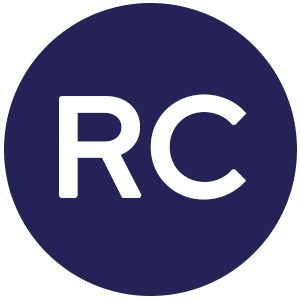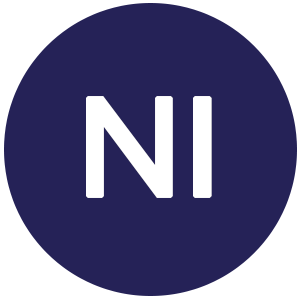When a hospital implements a real-time location system (RTLS) for its mobile asset management, everything changes. Informed decisions – those grounded in data rather than anecdote – become the norm, helping leaders effectively utilize their medical assets.
From saving money on new equipment and rental costs to helping staff find equipment when they need it and giving providers access to the equipment they need for optimum patient care, modern RTLS with its quick installation and room-level accuracy can help a hospital reap many long-term benefits.
Here are six ways implementing an RTLS can help your hospital derive value from every asset, tangibly impacting your efficiency and your bottom line.
1. Reducing unnecessary purchasing decisions
Every successful company in the world bases its purchasing decisions on true demand. Hospitals, for some reason, largely choose not to – at least when it comes to mobile equipment.
Too many high-dollar decisions are made based on anecdotal evidence from staff on the floor who say they don’t have enough of X or Y kind of equipment. These people have only a small view of the whole hospital and have no way of knowing that there may, in fact, be enough equipment – it’s just sitting dirty and waiting to be cleaned in the basement for a week at a time.
Without RTLS, the purchasing department has no way of knowing that fact, either. RTLS can give your financial decision-makers a clear and comprehensive view of the true utilization rate for any class of equipment, enabling evidence-based procurement decisions that can realize meaningful savings.
2. Identifying areas where purchases really are required
On the flip side, RTLS can also offer evidence that a hospital does, in fact, need to purchase additional equipment.
Here’s an example: Your hospital’s nurses have reported they need more bladder scanners. Your purchasing office wants evidence to back up the request, so they turn to your hospital’s RTLS to check the utilization rate – the number of pieces of equipment in use at any given time – to make a decision. The RTLS data shows that over the past three months, the average utilization rate for bladder scanners is above 80 percent – meaning nearly all bladder scanners are in use, all the time, so there’s a risk one may not be available when a nurse needs it.
In this instance, the evidence provided by the hospital RTLS supports the case for buying more bladder scanners to ensure staff have the tools they need to deliver timely patient care.
3. Saving money on rental contracts
Hospitals rent equipment for several different reasons. They will rent equipment that they cannot buy or those that are expensive but used rarely, such as a total care bariatric bed. If it turns out the hospital doesn’t need a piece of expensive equipment for the full length of its rental contract, it doesn’t make sense to just keep it sitting around. Tagging the equipment using RTLS can ensure the staff knows when the equipment is no longer in use and return it to the rental company early, saving money.
Additionally, hospitals will rent extra pieces of equipment that they already own when they need to temporarily boost their inventory. But if all the equipment looks the same, it’s nearly impossible to know which ones are rented and which are owned when it comes time to return the rentals. By the same token, if a staff member misplaces a piece of rental equipment, it will be very difficult to find and return on time given the thousands of places it could hide in a large hospital.
In both cases, tagging equipment using RTLS ensures you will be able to readily identify your rental equipment and pinpoint its location when you need to, reducing your risk of incurring late or lost equipment fees.
4. Ensuring proper allocation of clean equipment
The goal in hospital asset management is to have enough – but not too much – equipment in a ready state throughout the facility. If there aren’t enough pieces readily available to staff in a specific wing or on a certain floor, it can impact patient care as well as efficiency. If there are too many assets sitting idle, that represents money tied up in surplus equipment that would otherwise be used elsewhere.
The real-time visibility provided by RTLS can help you determine your ideal minimum and restock counts for storage in various areas of the hospital given the level of traffic and the kind of care delivered in those areas. The data may show your emergency department equipment experiences high turnover, so the overall counts need to be higher there than in other parts of the hospital. You may also see the utilization of breast pumps is high in the maternity and NICU areas, but virtually zero everywhere else, so you can distribute most of your inventory in those locations.
5. Managing attrition through preventable loss
Hospitals lose millions of dollars in equipment each year for a variety of reasons. Some of these losses are virtually unpreventable, but RTLS can help hospitals recoup equipment in cases of accidental theft and disposal. If a patient mistakenly believes they can take an item home for their postoperative care, the hospital can cross-reference room data with RTLS data to identify which patient was last in a room with the missing equipment. Then, the hospital can call to ask the patient or the skilled nursing facility where the patient was transferred to locate and return the equipment.
In another case, small medical devices frequently get caught up in bedding or trash when a cleaning crew turns over a patient room. RTLS can send an alert to staff that the equipment is in an area where it shouldn’t be, allowing them to recover it before the bag is whisked off to the washing machine or out to the dumpster.
6. Efficiently scheduling preventive maintenance
This is an underutilized benefit of an RTLS but one that can improve the efficiency of a hospital’s annual preventive maintenance process.
Most hospitals set aside specific times of year to perform required maintenance on different classes of equipment. For some classes, this will include thousands of items that often require a hospital to hire temporary staff to ensure the maintenance is complete within the allotted time. Extra staff, of course, can get expensive.
With the help of RTLS, you can assign maintenance dates for small batches of your assets for different times of the year and program the tags to alert staff to those dates. That means you won’t overwhelm your Biomed department with more work than they have staff to complete while still ensuring your equipment is maintained properly.
You can realize each of these benefits with Cognosos RTLS. Our solution has lower up-front costs and lighter infrastructure than any other RTLS on the market while still providing room-level accuracy that drives efficiencies and savings – resulting in a fast and proven path to ROI.
Want to learn more about our innovative tracking technology as well as the different types of RTLS on the market? Read our Ultimate Guide to Choosing the Right RTLS Solution for Your Hospital now.



